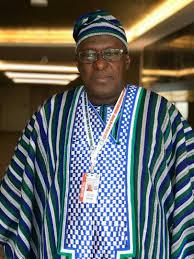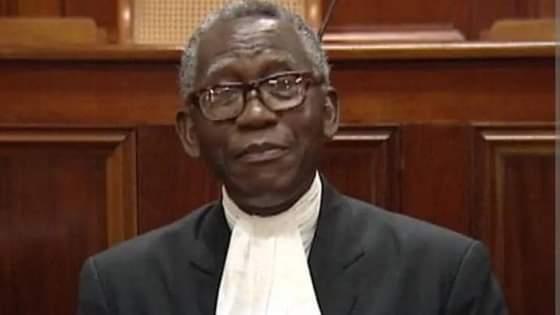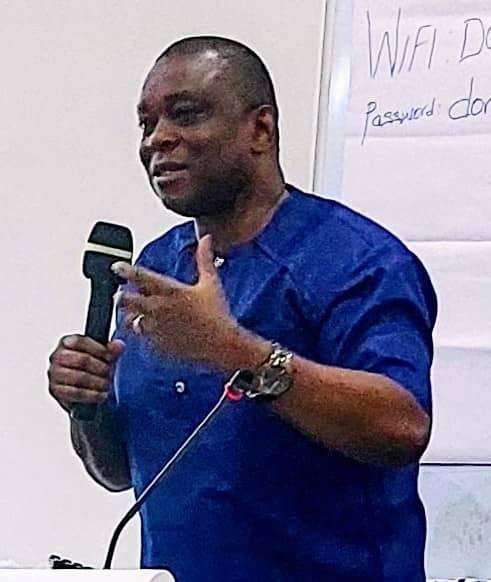Why Sierra Leone’s mining industry requires a robust environmental protection regime
As you enter Koidu town in the Kono District of eastern Sierra Leone an impressively large hill rises to the right of the newly constructed thoroughfare, dwarfing the settlements beneath it. But it is not the immense size of the hill alone that makes it such a striking sight; it is the oddness of it. The hill is completely man-made; composed of tailings and residue from nearby open-pit mines. The locals have nicknamed it “Mount Octea” after the company responsible for its formation, Octea Mining Ltd. (Photo: Sonkita Conteh, author)
Kono is famous for diamonds and Sierra Leone is notorious for its diamond-fuelled civil war. These precious stones have been mined in the country since the 1930s.
Earlier last year, a pastor discovered a 709 carat diamond in the east of the district, the second largest ever found in the country. In November 2017, another find of a 476 carat diamond was announced. What is perhaps less publicised is the scale of destruction that the search for these highly prized gems has brought to the environment in the district.
Over the past 10 years, government’s avowed economic strategy has been to transform Sierra Leone to middle income status by 2035 through “responsible natural resource exploitation” by the private sector.
However, stand-out examples of large-scale natural resource exploitation in the country have been less than responsible. In addition, dozens of smaller rogue entities have operated beyond the reach of regulation with devastating effect.
In April 2018, Sierra Leone had a turn-over of government. By its manifesto, the new party in power also plans to leverage the country’s natural resources to fund development. If the new government continues with the same pattern of disregard for the environment, established over the past decade, the only certain outcome is that by 2035 the country would have become a full blown environmental tragedy. Unrestrained resource exploitation is a dangerous gamble the country is likely to lose, if business continues as usual.
Both large and small scale, legal and illegal mining have left a trail of destruction in Kono. Rivers and wetlands have been badly affected. The conventional wisdom is that the richest deposits of diamonds are found on river beds and in swamps.
According to Octea’s Mine Reclamation and Closure Plan, “mine reclamation and closure issues need to be addressed continuously throughout the life of the mine.” Clearly, “Mount Octea” is towering evidence that the company has not been complying with its reclamation plan and apparently regulators of mining and the environment have not made a fuss about it.
In the nearby communities of Tombodu and Njagbwema-Fiama, the ghosts of yester mining meld with today’s active exploitation. Freshly dug swamps with piles of gravel waiting to be washed and old mined-out pits filled with filthy water form an unbroken panorama of devastation.
These communities are resigned to the reality of environmental ruin. Having lived through decades of sustained destruction of their land and waters, it is difficult for them to imagine a different life. “Local authorities also share the blame for the sorry state of our environment”, says Swad Kemoh, a community activist. “Small mining operations get their blessing and after they destroy our land, the chiefs don’t tell them to carry out restoration or get them to pay some compensation.”
Another district affected by destructive mining practices is Bonthe, in the south. Mineral sands miner Iluka, the largest producer of zircon, took over the operations of Sierra Rutile Ltd in December 2016.
Since the early 1960s various versions of Sierra Rutile have mined rutile from what is regarded as the world’s largest natural deposit. Rutile is used in the manufacture of white pigment which is used in everything from Styrofoam cups to paint.
The mineral is mined through the dredging of waterways and recently by using conventional earth-movers. Community forests, natural rivers, streams, watercourses and swamplands have been destroyed and in their place are gigantic artificial lakes and vast stretches of devastated land.
The 33-year agreement between Sierra Rutile and the government requires the company to formulate a “master plan for the effective reclamation and rehabilitation of mined out areas.” Some 15 years on, rehabilitation has been anything but effective.
The picture on the ground is of an environment beaten out of shape and character so much that people are willing to abandon their ancestral land for an uncertain future.
This is the case for Foinda. The inhabitants of the village desperately want to be relocated. Their farmlands and water sources have been destroyed by expanding dry mining activities. They could not fish anymore and the women who depended on backyard gardens were forced to stop when “machines took away their stream.” The company periodically supplies the community with tank water for domestic use but had until recently, resisted their call for relocation. According to an elder, ‘a village without farmland and stable water sources is a village in name only.’
Tonkolili district in northern Sierra Leone holds one of the biggest iron ore deposits in the world and its inhabitants are struggling to come to terms with the destruction that accompanies its exploitation. The iron is in the hills around Bumbuna, which hosts the country’s biggest dam and dozens of communities. The once lush hills are being torn down to get to the ore, while thousands of citizens struggle to live normally at the foot.
Villagers have relied on water flowing down from the hills and into their swamplands for sustenance for many years. They could grow rice and vegetables thrice every year in their swamps.
The Chinese-government company Shandong Iron and Steel Ltd acquired full control of the concession after it purchased the debts of the insolvent African Minerals Ltd. Until recently, mining had been taking place at a frenetic pace, with little or no environmental safeguards.
The villages in the valley are paying the price: swamplands have been covered with ore sludge and water sources polluted or destroyed. Nothing grows anymore in the swamps and it is dangerous to drink whatever water is left.
Several communities within the concession have been relocated. At least three of them face enormous challenges in their new “home”, including hostility from the host community which claims that the land acquisition arrangements were not transparent.
There is less land and fewer opportunities for the more than 800 relocated inhabitants. Promises of employing at least one person per household have not been kept.
Complaints have been dispatched to the mining and environmental regulators but there has been no meaningful response. The people and their leaders feel thoroughly abandoned. The despondency observed in communities in Kono is beginning to take root here as well. The law and institutions of power are failing the people and the environment yet again.
With at least 10 largescale mining and 163 exploration operations underway, the devastating impact of mining on the environment is set to multiply in the future.
To avoid an increasingly likely doomsday scenario, the new government needs to adopt a more responsible approach to resource exploitation that prioritises protection of the environment and the people who live in it.
Responsible natural resource exploitation goes beyond cursory public disclosures during the formulation of environmental impact reports. It requires a proactive, inclusive determination of the likely impacts of a project before commencement, not an afterthought two years into operations. It requires setting clear, project-specific conditions for the grant of an environmental licence and communicating those to communities within the affected area. It requires communities having access to adequate information to make an informed decision about whether or not a mining operation should happen. It requires establishing a simple mechanism for receiving and responding to environmental complaints from affected communities. It requires provision of real remedies to persons and communities affected by environmental violations including suspending or cancelling licences of violators. It requires adequate technical expertise and capacity to monitor and enforce compliance. Lastly, it requires courage to stand up to influences interested in short-term gains instead of long-term stewardship.
The consequences of poor environmental management extend beyond farmers and those in rural areas. The recent mudslide and flooding in the capital and other areas, which claimed the lives of hundreds, are cruel reminders of how vulnerable the country as a whole is, to adverse ecological changes.
“Mount Octea” epitomises the large man-made challenge Sierra Leone must surmount to survive as a nation. Successive governments have rolled out the red carpet for corporations to undertake “responsible” investments without truly holding them accountable for their transgressions. The new government must take a lesson from the past and its people by deploying an environmental protection regime that truly works.
By Sonkita Conteh, Director, Namati Sierra Leone
Stay with Sierra Express Media, for your trusted place in news!
© 2018, https:. All rights reserved.






